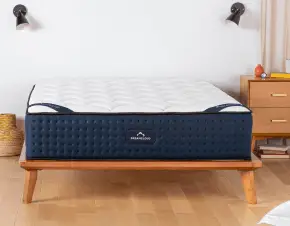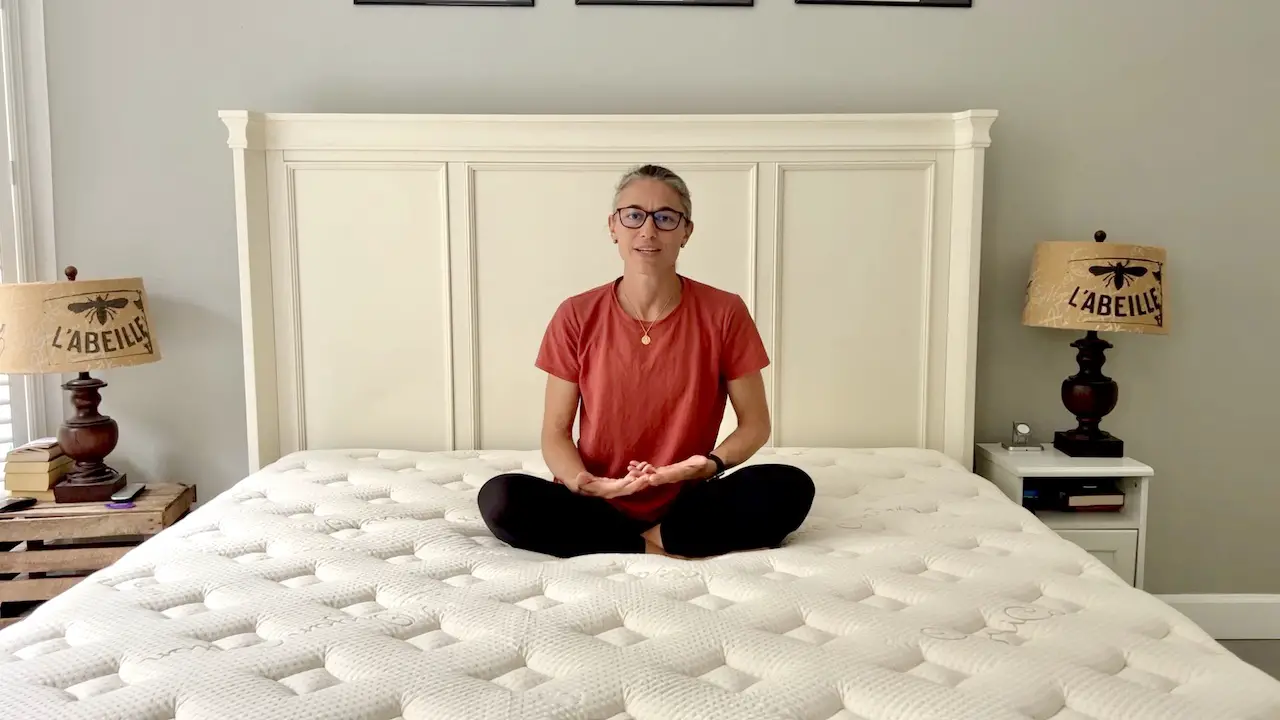BEST FREQUENCY FOR SLEEP
How Often and How Long Should You Rest for Optimal Health?
Sleep is one of the most essential aspects of human health, yet it is often misunderstood. We know we need rest, but how much and how often should we really be sleeping? In other words, what is the best frequency for sleeping?
Let’s take a closer look at what you need to know about sleep frequency, cycles, and schedules. We’ll cover the science of circadian rhythms, the optimal number of sleep hours, polyphasic versus monophasic sleep, and how you can fine-tune your sleep frequency to improve energy, focus, and overall wellness.
Whether you’re struggling with insomnia, feeling drowsy during the day, or just want to optimize your bedtime habits, understanding the best frequency for sleeping could be the key to unlocking better rest.
Table of Contents
What Does "Frequency for Sleeping" Mean?
The phrase frequency for sleeping refers to how often and how regularly a person should sleep in order to feel rested and maintain good health. It’s not just about how many hours of sleep you get in one stretch, but also how often those stretches occur.
For example:
Monophasic sleep: Sleeping once a day, usually at night (the most common pattern today).
Biphasic sleep: Sleeping twice a day, such as a long sleep at night and a nap in the afternoon.
Polyphasic sleep: Sleeping multiple times in short bursts across the day and night.
The ideal frequency for sleeping varies by age, lifestyle, and individual body rhythms, but sleep researchers largely agree that consistency is the most important factor.
Why Sleep Frequency Matters
Many people think only about “sleep duration” (how many hours they get per night). But science shows that frequency plays a big role in how refreshed you feel.
1. Sleep is Organized in Cycles
Your brain and body go through 90-minute sleep cycles, alternating between light sleep, deep sleep, and REM (rapid eye movement) sleep. If you wake up in the middle of a cycle, you may feel groggy even if you slept a long time. Matching your frequency for sleeping to these cycles can improve alertness.
2. Consistency Supports Circadian Rhythms
The body’s circadian rhythm is an internal clock that regulates when we feel sleepy or awake. If your sleep frequency is irregular—like going to bed late one night and early the next—it disrupts this rhythm, leading to poor quality sleep.
3. Short, Frequent Sleep May Work for Some
Certain lifestyles (such as shift work, parenting, or long travel schedules) require a different frequency for sleeping. Some people use naps or polyphasic sleep schedules to maintain energy when a long nightly rest is not possible.
The Best Frequency for Sleeping by Age
Different age groups require different sleep patterns. Here’s a breakdown of the best frequency for sleeping depending on age and development:
Newborns (0–3 months)
Frequency: Sleep in short bursts, 4–6 times a day.
Total Sleep: 14–17 hours daily.
Newborns lack a fully developed circadian rhythm, so their sleep is highly fragmented.
Infants (4–11 months)
Frequency: Usually 2–3 naps plus overnight sleep.
Total Sleep: 12–15 hours daily.
Toddlers (1–2 years)
Frequency: One nap per day plus nighttime sleep.
Total Sleep: 11–14 hours daily.
Preschoolers (3–5 years)
Frequency: Night sleep with occasional naps.
Total Sleep: 10–13 hours daily.
Children (6–13 years)
Frequency: Mostly nighttime sleep.
Total Sleep: 9–11 hours daily.
Teenagers (14–17 years)
Frequency: Night sleep, though naps may help with academic or athletic demands.
Total Sleep: 8–10 hours daily.
Adults (18–64 years)
Frequency: One consolidated sleep per night is best. Some may benefit from a short nap.
Total Sleep: 7–9 hours daily.
Older Adults (65+)
Frequency: Night sleep plus occasional daytime naps due to lighter nighttime rest.
Total Sleep: 7–8 hours daily.
Monophasic, Biphasic, and Polyphasic Sleep: Which Frequency is Best?
When we talk about frequency for sleeping, these three models often come up:
Monophasic Sleep
Definition: Sleeping once per day, usually at night.
Pros: Matches modern work schedules, easiest to maintain.
Cons: Harder for shift workers, may cause mid-afternoon energy dips.
Biphasic Sleep
Definition: Sleeping twice per day (e.g., 6–7 hours at night plus a 20–90 minute nap).
Pros: Boosts memory, reduces fatigue, mimics historical “first and second sleep.”
Cons: May be difficult with modern schedules.
Polyphasic Sleep
Definition: Multiple short naps across 24 hours (e.g., the Uberman schedule with 6 naps of 20 minutes each).
Pros: Used by some high-performance individuals, may save time.
Cons: Hard to sustain, disrupts social life, not recommended long-term.
Conclusion: For most people, the healthiest frequency for sleeping is monophasic (once nightly), supplemented with an occasional nap if needed. Biphasic sleep may be beneficial in cultures where siestas are common. Polyphasic schedules are extreme and rarely sustainable.
What Science Says About the Best Frequency for Sleeping
Research into frequency for sleeping shows that:
Consistency matters more than duration. Going to bed and waking up at the same times daily improves sleep quality, even if the total hours vary slightly.
Short naps are beneficial. A 20–30 minute nap can boost alertness without causing grogginess.
Sleep cycles last ~90 minutes. Planning your wake-up times around these cycles (e.g., 6, 7.5, or 9 hours of sleep) reduces grogginess.
Shift workers often need naps. Irregular schedules make monophasic sleep difficult, so frequent shorter rests can be a practical solution.
How to Find Your Ideal Frequency for Sleeping
Everyone has slightly different needs, but here are steps to discover the best frequency for sleeping for you:
Step 1: Track Your Sleep
Use a sleep tracker or app to monitor when you naturally fall asleep and wake up. Look for patterns in energy levels.
Step 2: Test Sleep Durations
Experiment with 6, 7.5, and 9 hours of sleep. Note how you feel when waking at the end of different cycles.
Step 3: Add Naps If Needed
If you hit an energy slump during the day, try a 20-minute nap. This can reset focus and improve mood.
Step 4: Stay Consistent
Go to bed and wake up at the same time daily, even on weekends. This strengthens your circadian rhythm.
Common Questions About Sleep Frequency
Is 6 hours of sleep enough?
For some adults, 6 hours may feel sufficient temporarily, but most need 7–9 hours for long-term health.
Can I split my sleep into chunks?
Yes, biphasic or segmented sleep can still be restorative if it adds up to your body’s needed total.
What happens if I nap too often?
Frequent long naps may interfere with nighttime sleep, disrupting your overall frequency for sleeping.
Do different frequencies affect dreams?
Yes—REM sleep (when most dreaming occurs) happens later in the night. Shorter or fragmented sleep may reduce dream time.
Is polyphasic sleep safe?
It is generally not sustainable long-term and may cause health issues if practiced for extended periods.
Optimizing Sleep Environment for Better Sleep Frequency
Your sleep environment affects how often and how well you rest. For the best frequency for sleeping, make sure your bedroom supports deep, uninterrupted rest.
Mattress & Bedding: Choose a mattress suited to your body type and sleeping position. Breathable sheets help regulate temperature.
Light Control: Limit blue light from screens before bed. Use blackout curtains to align with your circadian rhythm.
Temperature: Keep your bedroom around 65–68°F for optimal rest.
Noise: White noise machines or earplugs can help reduce disruptions.
What Is the Best Frequency for Sleeping? - Final Thoughts
The best frequency for sleeping is the one that allows your body to consistently get enough high-quality rest. For most adults, that means a monophasic schedule with 7–9 hours per night, possibly enhanced by a short afternoon nap.
Children, teens, and older adults may need slightly different sleep frequencies, but the key across all ages is consistency. Matching your sleep frequency to your body’s natural cycles and maintaining a sleep-friendly environment can dramatically improve your health, mood, and daily energy.
If you’re struggling to find the right frequency for sleeping, start small: go to bed at the same time every night, wake up consistently, and experiment with short naps. Over time, your body will guide you to the rhythm it needs most.
References
- Medical News Today. (2017). What is biphasic and polyphasic sleep?. Retrieved from https://www.medicalnewstoday.com/articles/319425
- BBC. (2022). The forgotten medieval habit of ‘two sleeps’. Retrieved from https://www.bbc.com/future/article/20220107-the-lost-medieval-habit-of-biphasic-sleep
- Cleveland Clinic. (2024). Circadian Rhythm. Retrieved from https://my.clevelandclinic.org/health/articles/circadian-rhythm
FAQ
Most frequent questions and answers
The best frequency for sleeping is a consistent nightly schedule of 7–9 hours, with optional short naps if needed.
Yes, biphasic sleep (nighttime rest plus a nap) can work well if it fits your lifestyle and adds up to your total sleep needs.
Most adults need 7–9 hours of sleep per night for optimal health, though individual needs may vary.
Short naps of 20–30 minutes can boost energy and focus, but long naps may interfere with nighttime sleep.
Yes, inconsistent sleep schedules can disrupt circadian rhythms, lower sleep quality, and increase fatigue.
Share this deal with a friend!

Laura Georgieff
Laura is a mother of three who did not sleep through the night for the first 5.5 years of her kids' lives. She is passionate about sleep quality and loves sharing her experience and knowledge of all thing bedding! It is her mission to help you make the best decisions when it comes to sleep and help you get the best deal on the market!
What is the best frequency for sleeping?
The best frequency for sleeping is a consistent nightly schedule of 7–9 hours, with optional short naps if needed.
Can I split my sleep into multiple sessions?
Yes, biphasic sleep (nighttime rest plus a nap) can work well if it fits your lifestyle and adds up to your total sleep needs.
How many hours should adults sleep each night?
Most adults need 7–9 hours of sleep per night for optimal health, though individual needs may vary.
Is napping part of a healthy frequency for sleeping?
Short naps of 20–30 minutes can boost energy and focus, but long naps may interfere with nighttime sleep.
Does irregular sleep frequency affect health?
Yes, inconsistent sleep schedules can disrupt circadian rhythms, lower sleep quality, and increase fatigue.






